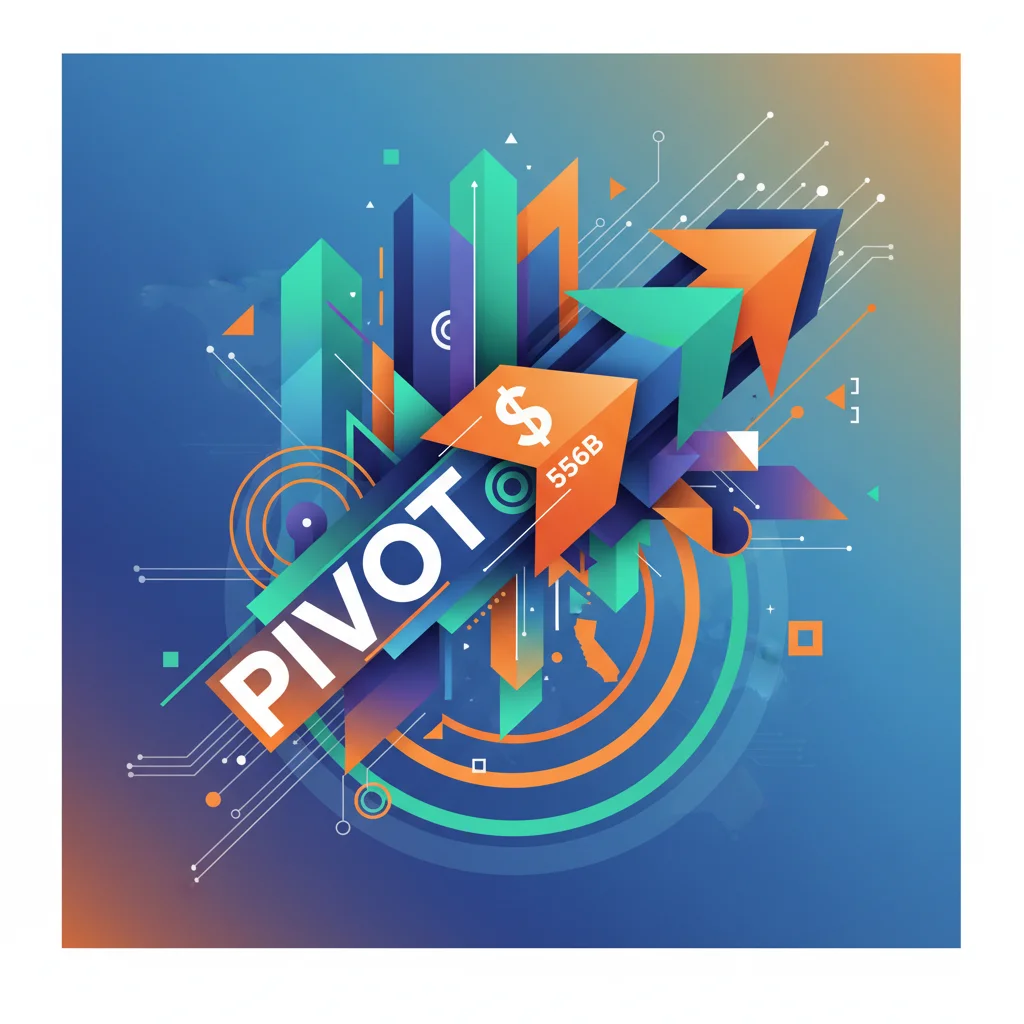
The $556 Billion Pivot: Why Calpers’ Radical New Strategy is a Game-Changer for Modern Investing
In the world of finance, when a titan moves, everyone pays attention. And they don’t come much bigger than the California Public Employees’ Retirement System, or Calpers. As the largest public pension fund in the United States, managing a staggering $556 billion in assets, its decisions create ripples that are felt across the global economy. Recently, Calpers announced a fundamental overhaul of its investment framework—a strategic pivot that is far more than just a minor portfolio rebalance. It’s a bold declaration about the future of investing, risk, and the very structure of the modern stock market.
The fund is moving away from traditional asset class buckets and towards a more sophisticated model based on risk factors and economic drivers. The most immediate and striking change? A significant increase in its allocation to equities, particularly in the private markets. This isn’t just an internal memo for pension managers; it’s a crucial signal for every investor, finance professional, and business leader about where the “smart money” is heading in an increasingly complex economic landscape.
Let’s break down what Calpers is doing, why it’s so significant, and what it means for the future of investing and trading.
The Cracks in the Old Foundation: Why Change Was Necessary
For decades, the bedrock of institutional investing, and indeed many personal retirement portfolios, was the 60/40 model: 60% in stocks for growth and 40% in bonds for stability and income. This simple, elegant strategy worked beautifully in an era of steady economic growth and declining interest rates. Bonds provided a reliable cushion when the stock market faltered. But the financial world has changed.
The last fifteen years have been defined by historically low interest rates, periods of quantitative easing, and now, a resurgence of inflation and geopolitical uncertainty. The reliable negative correlation between stocks and bonds has broken down, leaving traditional portfolios exposed. For a pension fund like Calpers, which has a mandate to generate a long-term return of 6.8% to meet its obligations to over 2 million members, the old playbook is no longer sufficient. The pressure to innovate is immense.
Calpers’ previous framework, which relied on categorizing investments into rigid asset classes like “public equity,” “fixed income,” and “real estate,” was becoming too simplistic. In today’s interconnected economy, a real estate investment might behave more like a private equity deal, and a private credit holding could have equity-like risk. The lines have blurred, and a new map is needed to navigate the territory.
The 0 Million Handshake: Decoding Goldman Sachs' Record-Breaking EA Deal
Deconstructing the New Playbook: From Asset Classes to Risk Factors
The core of Calpers’ new strategy is a shift in perspective—from thinking about what an asset is to understanding why it behaves the way it does. Instead of just owning “stocks,” the new model focuses on owning exposure to “economic growth” or “inflation protection.” This factor-based approach allows for a more nuanced and dynamic management of risk across the entire portfolio.
The most tangible outcome of this new framework is a significant change in asset allocation. Below is a simplified look at the key adjustments Calpers is making to its portfolio:
| Asset Category | Previous Target Allocation | New Target Allocation | Key Rationale |
|---|---|---|---|
| Total Equities (Public & Private) | 50% | 54% | Increased exposure to long-term economic growth and innovation. |
| Private Equity | 13% | 17% | Seeking higher returns (alpha) from less efficient, private markets. |
| Private Debt | 5% | 8% | Capturing higher yields as traditional banking recedes from corporate lending. |
| Public Debt (Bonds) | 28% | 24% | Reduced allocation due to lower expected returns and inflation risk. |
| Real Assets (e.g., Real Estate) | 15% | 14% | Slight reduction, likely reflecting a re-evaluation of risk in the current market. |
As the table illustrates, the fund is doubling down on growth-oriented assets, particularly in the private sphere. According to the Financial Times, this overhaul is the result of a two-year review and represents a decisive bet that private markets will continue to outperform public ones (source). By increasing its private equity and private debt allocations, Calpers is seeking to capture the “illiquidity premium”—the extra return investors expect for tying up their capital in assets that cannot be easily sold on a public exchange.
The Ripple Effect: What This Means for the Broader Market and You
A $556 billion fund doesn’t change direction in a vacuum. This strategic shift has wide-ranging implications for the entire financial ecosystem.
For the Financial Industry and Economy
Calpers’ increased appetite for private assets will inject billions of dollars into private equity and venture capital funds. This will likely fuel more corporate buyouts, provide more growth capital for startups, and intensify competition for deals. It’s a powerful tailwind for the private markets industry. This also signals a structural change in capital allocation within our economy. As more capital bypasses public stock markets, the nature of corporate governance, transparency, and value creation will continue to evolve. This is a macro trend that will shape economics and banking for the next decade.
For Individual Investors
While most individuals can’t directly replicate Calpers’ strategy, the underlying principles are instructive. The move underscores the importance of true diversification—not just across different stocks, but across different economic drivers. It suggests that a modern portfolio should consider assets that perform well during inflationary periods, assets tied to global growth, and perhaps even small, calculated allocations to alternative investments. The rise of fintech platforms offering access to venture capital, private credit, and fractional ownership of real estate is a direct response to this trend, attempting to democratize access to the same opportunities the giants are chasing.
Beyond the Odds: How Financial Technology is Turning Sports Betting into the Next Stock Market
The Unseen Engine: Financial Technology and the Future of Investing
Executing a strategy of this complexity would be impossible without cutting-edge financial technology. The shift from simple asset buckets to a multi-factor risk framework requires immense data processing power, sophisticated modeling, and advanced analytics. This is where fintech is no longer a buzzword but a core operational necessity.
Institutional investors like Calpers rely on powerful risk management software to constantly analyze how different economic scenarios—an interest rate hike, a supply chain shock, a geopolitical event—would impact their entire portfolio. This level of analysis goes far beyond traditional trading platforms.
Furthermore, as Calpers delves deeper into illiquid private markets, technology will be crucial for managing these assets. Looking ahead, innovations in blockchain and distributed ledger technology hold the potential to solve the biggest drawback of private assets: illiquidity. The concept of “tokenization”—creating a digital representation of a real-world asset on a blockchain—could one day allow for the fractional ownership and trading of private equity stakes or commercial real estate, bringing liquidity to markets that have none. While still in its early stages, this convergence of traditional finance and emergent technology is a space to watch closely.
The Calpers board approved the new asset allocation with a 9-3 vote, a detail that highlights the fact that even among experts, such a bold move is a subject of debate (source). It is a calculated risk, but one they believe is necessary to secure the financial futures of their millions of members.
Echoes of '97: Is Labour Repeating Blair's Greatest Economic Gamble?
A New Compass for a New World
Calpers’ strategic overhaul is a landmark event in the world of institutional investing. It’s an acknowledgment that the financial and economic landscape of the 21st century requires a more dynamic, sophisticated, and forward-looking approach than the models of the past. By increasing its bet on equities and private markets, the fund is making a powerful statement about where it believes future growth will come from.
For the rest of us, it serves as a valuable lesson: the world of investing never stands still. The forces shaping the stock market, the economy, and the very nature of risk are in constant flux. The decision by America’s largest pension fund to redraw its map is a clear signal that it’s time for all of us to check our own compasses and ensure we’re prepared for the journey ahead.


